Back to Don's Maps
 Back to Archaeological Sites
Back to Archaeological Sites
 Back to the review of hominins
Back to the review of hominins
The Denisovans
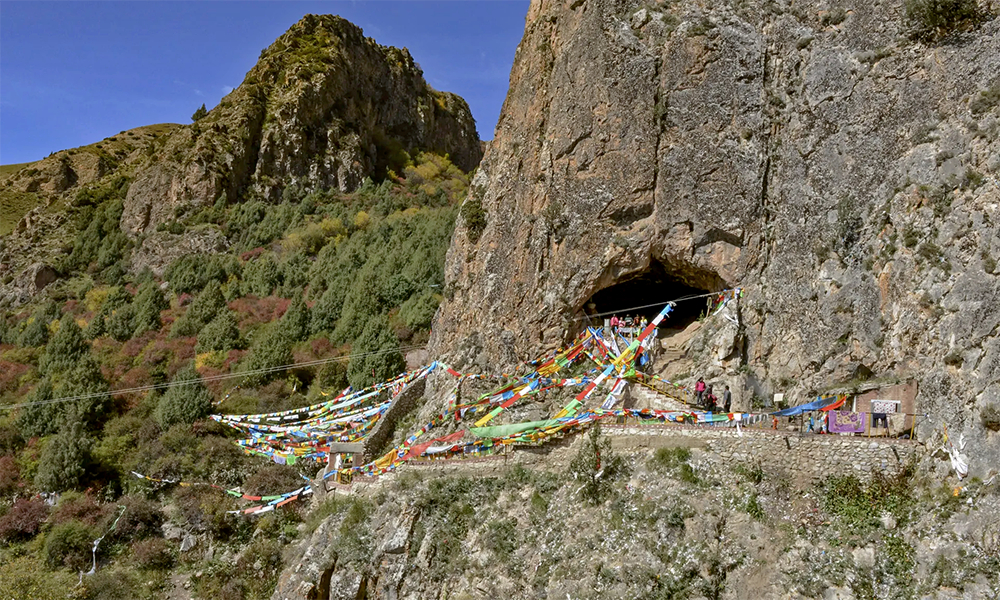
The Baishiya Karst Cave above the Jiangla riverbed, where the Denisovan jawbone was found.
Photo: Dongju Zhang/AP
Source and text: https://www.theguardian.com/science/2019/may/01/denisovan-jawbone-discovered-in-tibetan-cave
The Denisovans or Denisova hominins are an extinct species or subspecies of archaic humans in the genus Homo. Pending its status as either species or subspecies, it currently carries the temporary names Homo sapiens [subspecies] denisova. In March 2010, scientists announced the discovery of a finger bone fragment of a juvenile female who lived about 41 000 years ago, found in the Denisova Cave in the Altai Mountains in Siberia, a cave that has also been inhabited by Neanderthals and modern humans. The mitochondrial DNA (mtDNA) of the finger bone showed it to be genetically distinct from Neanderthals and modern humans. The nuclear genome from this specimen suggested that Denisovans shared a common origin with Neanderthals, that they ranged from Siberia to Southeast Asia, and that they lived among and interbred with the ancestors of some modern humans, with about 3% to 5% of the DNA of Melanesians and Aboriginal Australians and around 6% in Papuans deriving from Denisovans.
A 2013 comparison with the genome of another Neanderthal from the Denisova cave revealed local interbreeding with local Neanderthal DNA representing 17% of the Denisovan genome, and evidence of interbreeding with an as yet unidentified ancient human lineage. Analysis of DNA from two teeth found in layers different from the finger bone revealed an unexpected degree of mtDNA divergence among Denisovans. Two teeth belonging to different members of the Denisova cave population have been reported. In November 2015, a tooth fossil containing DNA was reported to have been found and studied.
Denisovans and Neanderthals split from Homo sapiens around 600 000 up to 744 000 years ago and diverged from each other about 200 000 years later
Text above: Wikipedia
In the 18th century, the cave was inhabited by a hermit, Dionisij (Denis), and was named after him, while the indigenous Altay people call it Ayu-Tash (Bear Rock). In the 1970s, Soviet scientists discovered palaeoarcheological remains in the cave that led to further explorations. So far, 22 strata have been identified, with archaeological artefacts that cover the time from Dionisij back to about 125 000 – 180 000 years ago. The dating of the strata was accomplished by the use of thermoluminescence dating of sediments, or, in some cases, radiocarbon dating on charcoal.
Among the archaeological artefacts are Mousterian and Levallois-style tools attributed to Neanderthals. Beside tools, researchers found decorative objects of bone, mammoth tusk, animal teeth, ostrich egg shell, fragments of a stone bracelet made of drilled, worked, and polished dark green chloritolite, and pendants. A 7 cm (2.8 in) sewing needle made from bird bone, estimated to be around 50 000 years-old, was found in Denisova Cave. The cave also contains stone tools and bone artefacts made by modern humans, and Pääbo commented: "The one place where we are sure all three human forms have lived at one time or another is here in Denisova Cave."
Text above: Wikipedia
A human jawbone found in a cave on the Tibetan plateau has revealed new details about the appearance and lifestyle of a mysterious ancient species called Denisovans.Text above, and much of the text which follows, except where otherwise indicated, comes from an article in the Guardian, https://www.theguardian.com/science/2019/may/01/denisovan-jawbone-discovered-in-tibetan-cave
The 160 000-year-old fossil, comprising a powerful jaw and unusually large teeth, suggests these early relatives would have looked something like the most primitive of the Neanderthals. The discovery also shows that Denisovans lived at extremely high altitude and, through interbreeding, may have passed on gene adaptations for this lifestyle to modern-day Sherpas in the region.
Jean-Jacques Hublin, the director of the department of human evolution at the Max Planck Institute for Evolutionary Anthropology in Leipzig and senior author of the find, described this element as spectacular. He said that until today, nobody imagined that archaic humans could be able to dwell in such an environment.
The dating of the mandible suggests temperatures on the plateau would have been even harsher than today, when temperatures can plunge to -30C.
Previously, the only known Denisovan fossils came from a cave in Siberia, and amounted to a finger fragment, some teeth and a few jagged pieces of bone. Crucially, scientists were able to extract DNA from inside the bone and by comparing this with other ancient DNA and present-day populations they learned that the species must once have been widespread across Europe and Asia.
The latest fossil represents a crucial link between the Siberian specimens and other Chinese fossils, from which scientists had previously failed to extract DNA, but which show remarkable anatomical similarities to the Tibetan specimen.
The fossil was discovered by a monk in Baishiya Karst Cave on the Tibetan plateau in China’s Gansu province. After finding the jaw in the 1980s, the monk gave it to a Buddhist leader, who passed it along to Lanzhou University in China. Study of it began in 2010.
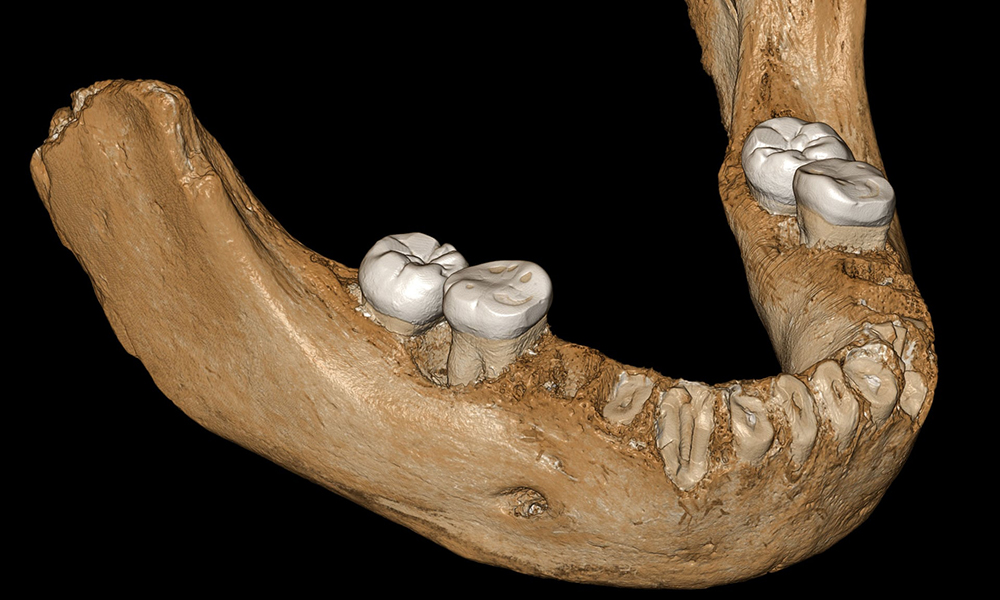
This Denisovan mandible likely represents the earliest hominin fossil on the Tibetan Plateau, researchers say.
Photo: Jean-Jacques Hublin/AFP/Getty Images
Source and text: Facsimile, https://www.theguardian.com/science/2019/may/01/denisovan-jawbone-discovered-in-tibetan-cave
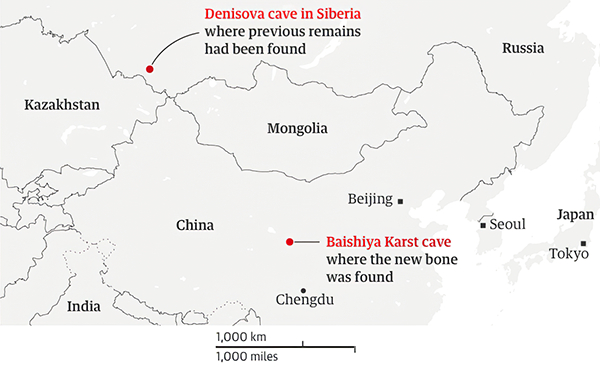
Location map.
Photo: https://www.theguardian.com/science/2019/may/01/denisovan-jawbone-discovered-in-tibetan-cave

The cave in which the bone was found is in a rugged valley on the mountainous Tibetan plateau.
Photo: Dongju Zhang/AP
Source and text: https://www.theguardian.com/science/2019/may/01/denisovan-jawbone-discovered-in-tibetan-cave
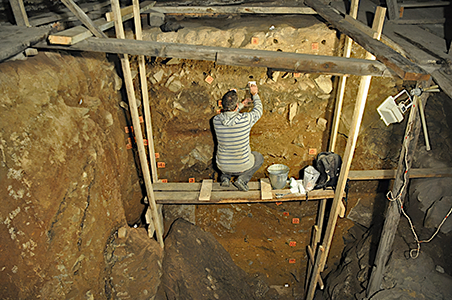
Mike Morley takes samples from the deposits in Denisova Cave.
Photo: Dr. Paul Goldbert, University of Wollongong
Source and text: https://www.wissenschaft.de/geschichte-archaeologie/denisova-hoehle-aufschlussreiches-dreck-profil/
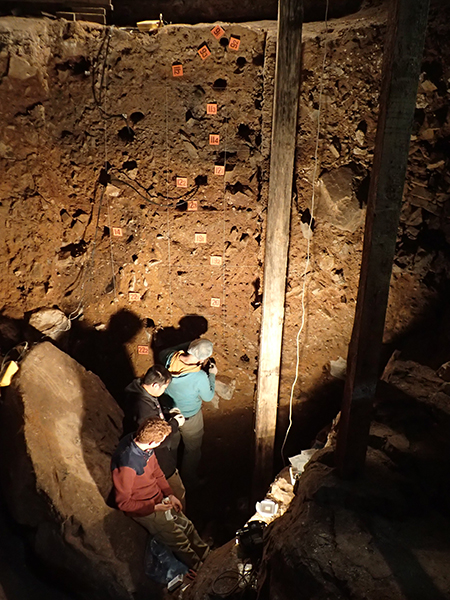
Excavations in the cave by our Russian colleagues have unearthed about a dozen fossils of Denisovans and Neanderthals over the past 40 years, but none of modern humans.
Rather, the presence of modern humans at the cave has been surmised based on the recovery of artefacts made from stone, animal bones and teeth, mammoth ivory, ostrich eggshells, marble and gemstones.
The rarity of fossils at the site has also meant that questions persist about when different groups of humans occupied the cave, and which of them was responsible for making specific artefacts.
We managed to put flesh on the missing bones by using genetic traces of ancient humans and various other mammals preserved in the cave sediments. And we did so without having to find more fossils.
Our latest work is the most comprehensive study yet of ancient DNA extracted from sediment at any single site in the world. It builds on our trailblazing research published in 2017.
We extracted mitochondrial DNA from more than 700 samples and anchored them to a timeline for Denisova Cave, generating a detailed picture of which humans and animals were present at this famous site at various times in the past.
Photo and text: Bert Roberts
Source: https://theconversation.com/
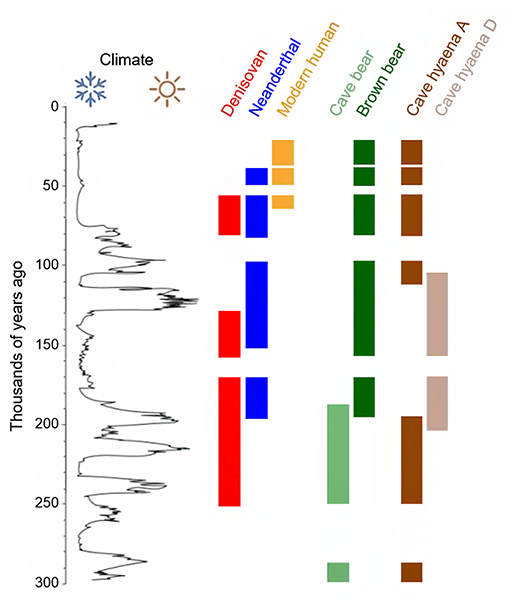
(left) Summary timeline of the different types of human, bear and hyaena DNA in sediments at Denisova Cave. White gaps indicate missing parts of the sedimentary sequence. The graph on the left shows the changes in climate between relatively cold and warm conditions recorded in drill cores from Lake Baikal, also in southern Siberia.
In the foothills of the Altai Mountains in southern Siberia lies Denisova Cave. It is the only site in the world known to have been inhabited by the eponymous Denisovans and their close relatives the Neanderthals (Homo neanderthalensis) — which overlapped at times — as well as by some of the earliest modern humans (Homo sapiens) to have dispersed into northern Asia.
Our new study pieces together the history of this site over the past 300,000 years from fragments of ancient DNA that survived in the cave sediments. Our findings reveal multiple turnovers of archaic and modern humans during this period, as well as major changes in the diversity of other animals.
We discovered Denisovans were the earliest toolmakers at the site, while Neanderthals were the sole human occupants between about 130,000 and 80,000 years ago. The first modern humans arrived much later, just as the last Denisovans and Neanderthals were leaving the scene.
We also detected marked changes in the types of human and animal DNA around 200,000 and 100,000 years ago, coincident with major shifts in climate and environmental conditions.
Photo and text: Bert Roberts
Source: https://theconversation.com/
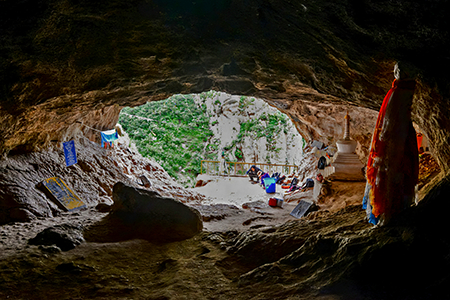
The opening of the Baishiya Karst Cave, where a 160 000 year old fossil jawbone was discovered.
Photo: Dongju Zhang/Lanzhou University via Reuters
Source and text: https://www.scmp.com/news/china/article/3008496/ancient-sherpa-relative-160000-year-old-jawbone-found-tibetan-cave-sheds
The scientists were not able to obtain DNA from the sample, but managed to extract proteins from one of the molars. Proteins, like DNA, could be sequenced and the analysis placed the fossil firmly on the Denisovan branch of the evolutionary tree.
The discovery indicates that Denisovans adapted to high-altitude, low-oxygen environments much earlier than the regional arrival of modern humans about 40,000 years ago.
It also helps explain how present-day Sherpas and some Tibetan populations came to carry a gene of Denisovan origin – presumably acquired through ancient interbreeding – that allows these populations to cope with hypoxia. 'This has been quite puzzling because the [Siberian] cave was not at high altitude,' said Hublin.

Two views of a virtual reconstruction of the Xiahe mandible. At right, the simulated parts are in gray. According to a report, the bone is at least 160 000 years old.
Previous research had indicated that Denisovans must have lived somewhere other than Siberia, because traces of their DNA can be found in several present-day populations of Asia and Australia whose ancestors probably didn’t pass through that region. The new finding expands their known range, although Hublin said it’s still not clear where Denisovans first appeared. They are named for Siberia’s Denisova cave, where the remains were found.
Photo: Jean-Jacques Hublin / MPI-EVA, Leipzig via AP
Source and text: Facsimile, https://www.nbcnews.com/mach/science/jawbone-fossil-tibetan-plateau-sheds-light-mysterious-neanderthal-kin-ncna1000801
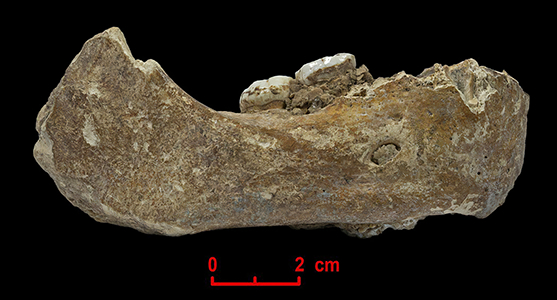
The right half of the Xiahe mandible, found in 1980 in the Baishiya Karst Cave in China’s Gansu province of China.
Study of it only began in 2010.
Photo: Qiu Menghan/Dongju Zhang/Lanzhou University via AP
Source and text: Original, https://www.scmp.com/news/china/article/3008496/ancient-sherpa-relative-160000-year-old-jawbone-found-tibetan-cave-sheds
Previously scientists had assumed the gene most probably served a different purpose in Denisovans, such as helping them cope with intense physical activity, and that it was later coopted for a different purpose. Stringer said: “Now it seems more likely that it originated in high altitude-adapted Denisovans, and could have been passed on directly in the region.” Scientists could not be certain of this, though, because they were unable to extract a genome from the new specimen.
The paper, published in Nature, is one of the first to use protein analysis to determine an ancient human species and the technique is seen as hugely promising because protein tends to be preserved better than DNA. The team said they were hopeful that further fossils in China would be able to be tested using the method.
Text above: https://www.scmp.com/news/china/article/3008496/ancient-sherpa-relative-160000-year-old-jawbone-found-tibetan-cave-sheds
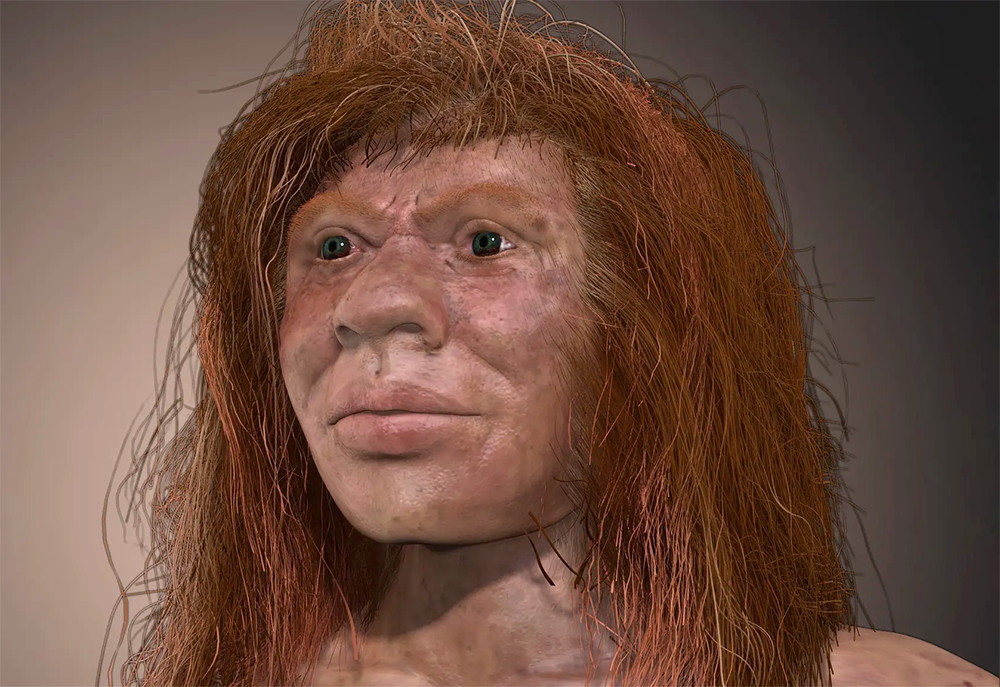
An artist’s impression of the teenage 'Denny', the ancient mixed heritage Denisovan mystery girl, who lived 90 000 years ago, and who had a Neanderthal mother and a Denisovan father.
Photo: © John Bavaro/early-man.com
Source and text: https://www.theguardian.com/science/2018/nov/24/denisovan-neanderthal-hybrid-denny-dna-finder-project
When the results first popped up, paleogeneticist Viviane Slon didn't believe it. 'What went wrong?' she recalls asking herself at the time. Her mind immediately turned to the analysis. Did she make a mistake? Could the sample be contaminated?
The data was telling her that the roughly 90 000-year-old flake of bone she had tested was from a teenager that had a Neanderthal mother and Denisovan father. Researchers had long suspected that these two groups of ancient human relatives interbred, finding whiffs of both their genes in ancient and modern human genomes. But no one had ever found the direct offspring from such a pairing.
Slon, a postdoc at the Max Planck Institute in Leipzig, sampled the bone from another spot; she got the same result. So she did it again. After running tests on six samples in all, the results always came out the same: The bone had nearly equal amounts of DNA from a Neanderthal and a Denisovan.
The landmark find, published in Nature, marks the first definitive evidence for offspring that came directly from interbreeding of these ancient species and is helping shape our understanding of hominin interactions.
'It's amazing to be able to find something like this,' says David Reich, a geneticist at Harvard who was not part of the work. 'It seemed unlikely that we would be able to catch it happening in the act - an individual that's really the product of a first-generation hybrid.'
Photo: unknown
Source and text: https://www.nationalgeographic.com.au/history/ancient-girls-parents-were-two-different-human-species.aspx
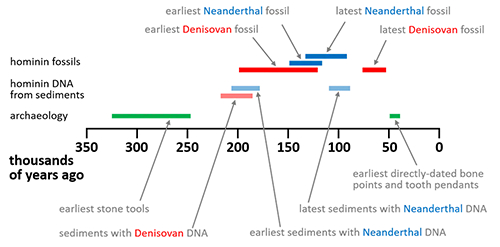
Summary timeline for the archaeology, hominin fossils and hominin DNA retrieved from the sediments at Denisova Cave.
Photo: Bert Roberts
Source and text: https://www.sciencealert.com/we-finally-have-some-idea-of-when-the-mysterious-denisovans-walked-the-earth
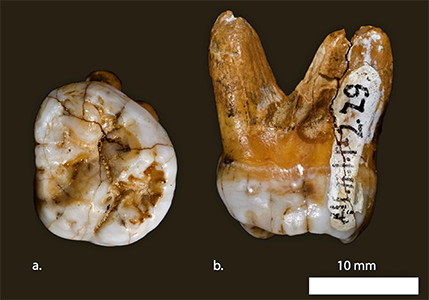
Molar, Denisova.
Until recently, scientists relied on what genetic information they could glean from a single Denisovan tooth and finger bone discovered in 2008. But after a second tooth was recently uncovered and analyzed, everything they knew about our ancient cousins changed.
The new tooth, called 'Denisova 8' appears to be at least 110,000 years old, roughly 60,000 years older than the other two specimens. The Denisovans were more closely related to Neandethals, having diverged from Homo sapiens about 500,000 years ago. Yet genetic scans suggest that Denisovans interbred with both Neanderthals and Homo sapiens, as well as possibly a fourth unknown species, Sarah Kaplan writes for The Washington Post.
Photo: https://www.nytimes.com/video/science/100000002887069/science-profile-svante-paabo.html
Text: Danny Lewis, smithsonian.com 17th November 2015
Source: https://www.smithsonianmag.com/smart-news/dna-reveals-new-branch-european-ancestry-180957312/
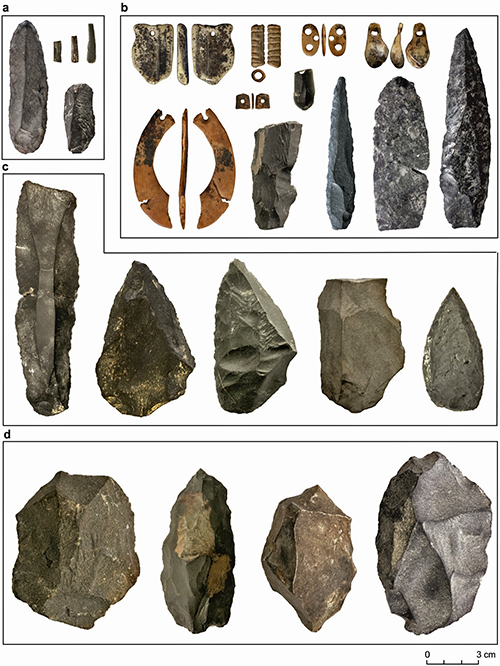
Selection of artefacts from Denisova Cave.
Photo: Siberian Branch of the Russian Academy of Sciences
Proximal source and text: https://www.sciencealert.com/we-finally-have-some-idea-of-when-the-mysterious-denisovans-walked-the-earth
The Denisovans
Of all the ancient peoples that have been studied by scientists, none has set puzzles quite so profound as those left behind by the Denisovans. Only a few tiny pieces of bone and teeth have ever been found of this long extinct species – fragmentary remains that would all fit snugly inside a cigarette packet.
Yet these fossil scraps suggest that Denisovans had a considerable influence on people today. Up to 6% of the genes now found in modern New Guineans and 3-5% of the DNA of aboriginal Australians is made up of Denisovan DNA, scientists have discovered. The gene that allows Tibetan people to survive high altitudes is also believed to have been inherited from them. This information tells us one thing: tens of thousands of years ago, modern humans encountered Denisovans – and had sex with them. It is a startling discovery that raises many basic questions. Just who were the Denisovans? What did they look like? And what were their relations with the Neanderthals, their closest evolutionary cousins? Did they have tools and art like the Neanderthals?
At present, researchers have few answers to these questions, such is the paucity of the Denisovan fossil record. But a new project, Finder – Fossil Fingerprinting and Identification of New Denisovan Remains from Pleistocene Asia – which has been just been launched with backing from the European Research Council, aims to put that right and transform our knowledge of the Denisovans and their relations with both Homo sapiens and the Neanderthals. All three species interbred, we now know, and a key aim of the study is to help understand these complex bondings: Denisovans will be a special focus, however.
'We aim to find out where they lived, when they came into contact with modern humans – and why they went extinct,' says project leader Katerina Douka, of the Max Planck Institute in Jena, Germany and a visitor at Oxford University.
Denisovan research faces a basic problem, however – paucity of fossils. Denisova Cave in Siberia – where their eponymous remains were first found in 2010 – is our sole source, and only a handful of fossils have ever been dug up there (along with several Neanderthal pieces).
'It is a wonderful site,' says Tom Higham, deputy director of Oxford University’s Radiocarbon Accelerator Unit and an adviser to Finder. 'It is cool inside, so DNA in bones does not disintegrate too badly. However, nearly all the bones there have been chewed up by hyenas and other carnivores.' As a result, Denisova’s cave floor is littered with tiny, unidentifiable bone fragments.
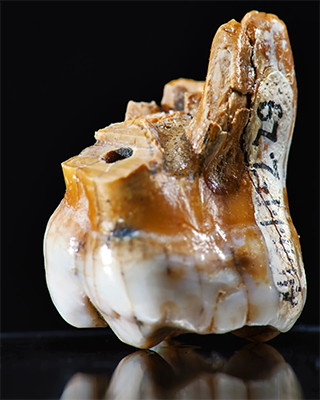
A molar tooth found at Denisova Cave.
Photo: © Robert Clark
Source and text: https://www.theguardian.com/science/2018/nov/24/denisovan-neanderthal-hybrid-denny-dna-finder-project
'You cannot tell whether a piece comes from a mammoth or a sheep – or a man or woman,' adds Higham. 'Only a very few will be human, though they are certainly worth finding – they could tell us so much.'
Current techniques for identifying bone fragments involve the time-consuming process of extracting and sequencing DNA. 'That takes far too long to be practical,' says Higham. 'There are tens of thousands of bits of bones here.'
However, Douka and Higham will use a new technology called Zooarchaeology by mass spectrometry – ZooMs. Developed by Mike Buckley, at Manchester University, the technique, which is derived from food science research, exploits the fact that collagen, a protein fibre found in bone, can survive for hundreds of thousands of years. Every major mammal group has a distinctive type of collagen, and ZooMs can read its structure like a molecular barcode, identifying which animal was the originator of a particular bone. This makes it ideal for differentiating human and animal remains.
'We asked Anatoly Derevyanko and Mikhail Shunkov, who direct the cave’s excavations, for samples – and they gave us a big bag full of bits of bones. All the fragments were considered to be unidentifiable,' says Douka.
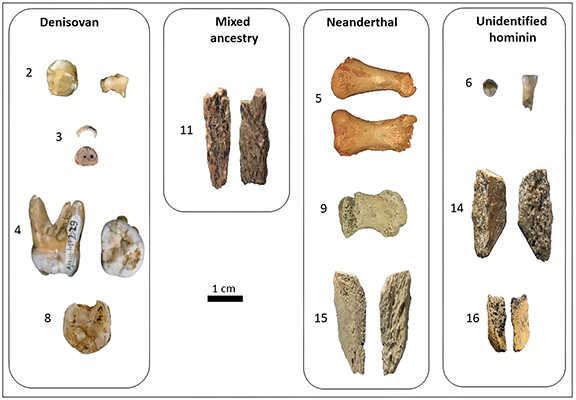
All fossils of hominin bones discovered at Denisova Cave.
Photo: Zenobia Jacobs
Proximal source and text: https://www.sciencealert.com/we-finally-have-some-idea-of-when-the-mysterious-denisovans-walked-the-earth

Site of the Denisova Cave in Altai Mountains of southern Siberia.
Photo: © AP
Source and text: https://www.theguardian.com/science/2018/nov/24/denisovan-neanderthal-hybrid-denny-dna-finder-project
The team began to prepare the bones. A 20mg slice was cut from each and placed in a test tube and given an identification code. After three months, 150 samples had been prepared. 'That was nowhere near enough,' says Higham.
So Douka and Higham asked their postgraduate students for a volunteer to work on the project. 'No one came forward,' says Higham. 'A week went by, then a fortnight. I was beginning to get worried. Then an Australian student, Samantha Brown, knocked on my door and volunteered to work the bones as part of her master’s dissertation. She saved the day.'
Over the next few weeks, Brown undertook the laborious task of cutting and labelling tiny slices from each bone fragment. 'I eventually prepared about 700 samples,' she recalls. These were then taken to Manchester for analysis in Buckley’s laboratory. 'The results showed we had a lot of cow bones, a few other animals but no humans,' says Brown. 'It was very disappointing.'

Denisova Cave in 2008
Photo: Демин Алексей Барнаул
Permission: Creative Commons Attribution-Share Alike 4.0 International license
Camera location 51° 23′ 51.9″ N, 84° 40′ 44.03″
At that point, Brown could have left the project with honour. But she chose to go on. 'Thank God she did,' says Higham. A further 1,500 Denisova bone samples were prepared by her and then taken to Manchester. This time, the results were spectacularly different. One bone, number 1,227, was identified as being from a human species.
'We could not believe that it had actually worked. It was wonderful,' says Douka. Brown was also overjoyed. 'It was unbelievably exciting. We had not only shown the technique works but we had found a hominin. And I had been prepared for the worst.'
It was tremendous news for the team. But their discovery lacked a key piece of information. Yes, they had found a human of some kind, but which species? ZooMs can tell only if a bone comes from a member of the hominidae family, which includes great apes and humans, including Homo sapiens, Neanderthals and Denisovans. It cannot differentiate within this group. 'There have never been great apes around Denisova so that meant we had to have found a piece of a human,' says Higham. 'But which species?'
To find out, the sample was taken to Svante Pääbo at the Max Planck Institute for Evolutionary Anthropology in Leipzig, whose team had sequenced the first Denisovan genome in 2010. Initial analysis showed that the bone was more than 50,000 years old and from a person who had been 13 or older when they died.
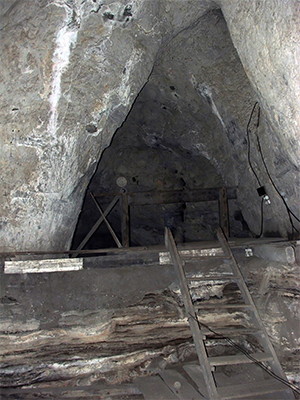
Interior of Denisova Cave in 2008.
Photo: Демин Алексей Барнаул
Permission: Creative Commons Attribution-Share Alike 4.0 International license
Camera location: 51° 23′ 51.9″ N, 84° 40′ 44.03″ E
Then the Leipzig team – led by Pääbo’s student Viviane Slon – began more detailed genetic analysis and made a startling discovery. Exactly half the sample consisted of Neanderthal DNA. The other half was made up of Denisovan DNA. At first, the researchers assumed that the sample was contaminated. 'I thought they must have screwed up something,' says Pääbo.
But re-testing confirmed the finding: the Oxford team had discovered the 90,000-year-old remains of a hybrid daughter of a Neanderthal mother and a Denisovan father. She was nicknamed Denny. 'If you had asked me beforehand, I would have said we will never find this, it is like finding a needle in a haystack,' Pääbo told Nature.
To discover a first-generation person of mixed ancestry was extraordinary. But there were more revelations to come. Further detailed studies of the genes of Denny’s Denisovan father were found to contain fragments of Neanderthal DNA. These indicated that interbreeding between the two species had also occurred at an earlier time.
At first sight, Denny’s remarkable ancestry suggests that Neanderthals and Denisovans must have mated with each other regularly. But Douka counsels caution. 'The DNA of Neanderthals and Denisovans are distinct. We can easily tell them apart. That argues against frequent interbreeding. Otherwise they would have ended up with the same DNA.'
Past studies have provided clear evidence that Denisovans and modern humans interbred, and also that Neanderthals and modern humans mated with each. Now, thanks to ZooMs – which has since been used to pinpoint other ancient human remains – there is dramatic evidence of Denisovan and Neanderthal intermingling. But why at Denisova?
One suggestion is that the cave represents a border outpost for both species, one that was situated at the very eastern edge of the range of the Neanderthals, who were primarily a European species, and at the very western tip of the homelands of the Denisovans, who were an eastern species. Occasionally members from both groups would have reached the cave at the same time – with amorous consequences.
It is an idea borne out by detailed studies of Denny’s Neanderthal mother. Her genes show a particularly close affinity with Neanderthals who lived in Croatia, suggesting that the immediate predecessors of Denny’s mother may have been part of a group who slowly migrated east from Europe towards Denisova – where she encountered Denny’s father at the outer edges of each other’s homelands.
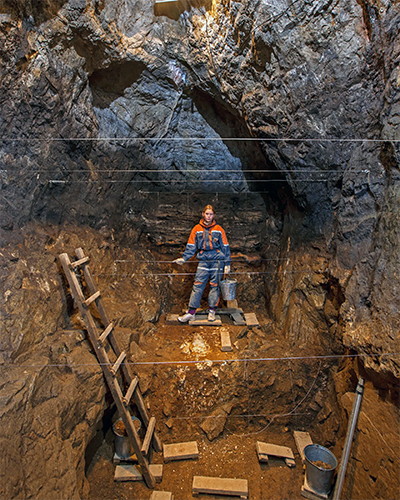
Excavation at Denisova Cave.
Photo: © Robert Clark
Source and text: https://www.theguardian.com/science/2018/nov/24/denisovan-neanderthal-hybrid-denny-dna-finder-project
It is an intriguing picture, though much more information is required to confirm it. Scientists have no direct evidence that the Denisovans’ homeland range was primarily to the east of the cave, although the fact that their genes have been detected in the DNA of populations in Australia, New Guinea and other parts of Oceania, provides support for this idea and suggests future searches for sites should be focused on eastern Russia, China and south-east Asia.
A great deal more needs to be learned about the Denisovans, says Higham: 'What was their distribution? What is the earliest evidence for their emergence from the common ancestor they shared with Neanderthals 500,000 years ago? If we could get a bone or two from other sites, that would be tremendously helpful.' One possible source of fossils could include remains of ancient humans that were placed in museums in Asia decades ago. These could be wrongly labelled, and could be Denisovans, researchers suggest. Unfortunately, it has proved difficult to get hold of these specimens for sampling.
For their part, Douka and Higham are planning on a number of approaches. One of these will be to collaborate with researchers in Chinese laboratories, teaching them how to use ZooMs, and how to use the technology to uncover more Denisovan sites.
'ZooMs is going to be crucial to this project,' says Douka. 'We have shown that it is a powerful tool for pinpointing human fossils. That makes it ideal for tracking down Denisovans.'
The riches within Denisovan DNA
Knowledge of the Denisovan people emerged from studies of ancient genomes, which began 20 years ago when scientists first developed techniques for extracting DNA from fossils and for creating copies of that genetic material which allowed them to study it.
Scientists at the Max Planck Institute in Leipzig were studying bones and teeth found in Denisova cave in the Altai Mountains in Siberia, where Neanderthal fossils had been found. One bone and one tooth, they discovered, belonged to a previously unknown species of ancient human.
These few fossils proved to be spectacularly rich in genetic material, allowing scientists to sequence entire genomes. It is this detailed information about the Denisovan genome that has demonstrated they interbred with modern humans.
Descendants of these unions, carrying small amounts of Denisovan DNA, went on to settle in Melanesia and Australia thousands of years ago.
In this way, we can see Denisovan DNA in that of modern humans, though we have no idea what the Denisovans looked like or where, exactly, they lived.
https://www.kbia.org/post/denisovans-mysterious-form-ancient-humans-are-traced-tibet#stream/0 https://www.sciencemag.org/news/2019/05/first-fossil-jaw-denisovans-finally-puts-face-elusive-human-relatives https://spectrumlocalnews.com/nc/triad/ap-top-news/2019/05/01/chinese-fossil-sheds-light-on-mysterious-neanderthal-kin